In the Rías Baixas estuary lies a small piece of paradise in the form of the Cíes Islands, where white sandy beaches and crystal clear waters are just a ferry ride away from Vigo. This archipelago sits off the coast of Pontevedra in Galicia and is the pride of all Galicians.
Declared a natural park in 1980, these islands are the crown jewels of the Atlantic Islands in Galicia National Park since 2002. With spectacular scenery, beaches and hiking trails for all levels, the Cíes Islands are an ideal destination for a day trip if you are renting holiday accommodation in Vigo.

How to get the Cíes Islands
There is only one way to get to the Cíes Islands and it's by sea. There are several cruise lines that offer trips from Vigo, Cangas and even Baiona. From June to September there are several trips daily. There is also a ferry at Easter, on weekends in May and, depending on the weather, in October.
Tickets can be purchased at the Vigo Maritime Station or online. However, it is recommended to reserve in advance, especially during July and August as only a certain number of people can visit per day to preserve the beauty of the islands. The island of San Martiño is a special case: the only way to visit is to rent a private boat and you will need a permit to drop anchor here.
Las Islas de Los Dioses
When we talk about Cíes - known as the islands of the gods by the Romans - we refer to three different islands. The small archipelago is located in the mouth of the estuary of Vigo and is some of the most magical places in the southern coast of Galicia.
- Monteagudo: this island is separated by a narrow channel from Cabo Home.
- Faro: the island that sits in the middle.
- San Martiño: known as the South Island.
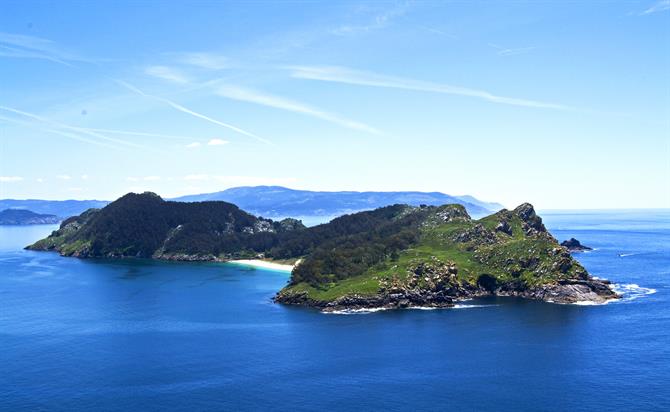
The first two islands are linked by a long spit of sand shaped like a boomerang. This 'boomerang' is called Rodas beach and was voted the "best beach in the world" by The Guardian in 2007, and since has been a regular in the travel sections of major European newspapers. Rodas beach, with a natural lagoon just behind it, has become the emblem of the Cíes Islands.
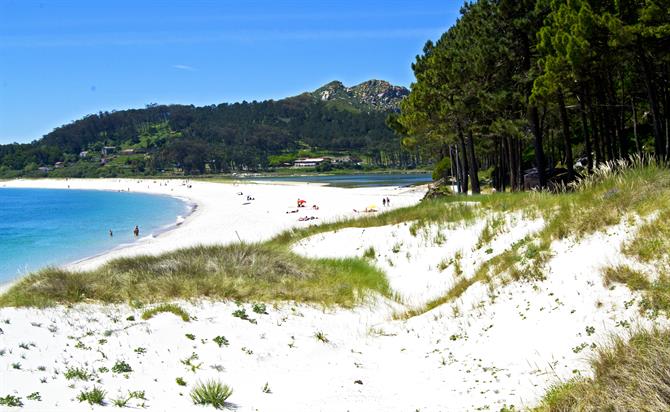
However, the Cíes Islands are not limited to Rodas beach. They also represent one of the best bird observatories in southern Galicia, they have the best diving seabeds of the Rías Baixas and an amazing camping area. With a limited number of people allowed to camp on the Cíes islands, you need to reserve your spot in advance and obtain a camping permit from the Maritime Station in Vigo before you travel.
9 incredible sandbanks
These beaches are like the nine suns of the islands. Their light and purity are transmitted to the clear Galician waters. Whilst it is true that the water is colder than in the Caribbean, the colours of the sand and water are an exact match.
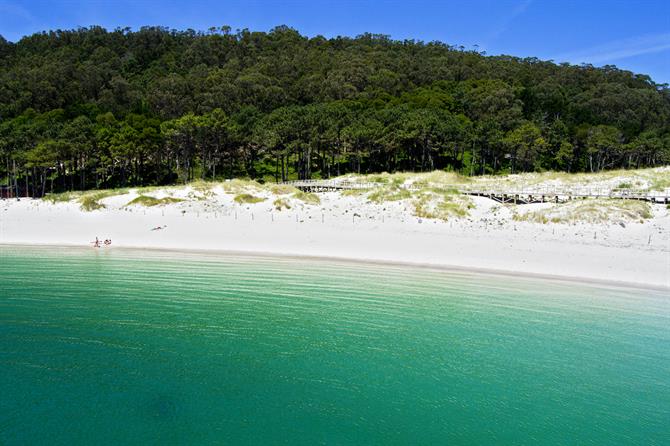
The most famous beach in the Cíes Islands, Rodas beach is located near the pier, on the left. With stunning clear waters, a lush green backdrop and pure white sand, it's no wonder why so many people come to see it with their own eyes. To avoid the crowds, the best time to visit the Cíes Islands is in June or September.
Another beautiful spot is Figueiras beach, also known as the beach of the Germans, it is a long stretch of fine white sand and fairly quiet. Get there from the pier via a path that veers off to the right. This beach is also popular with nudists.
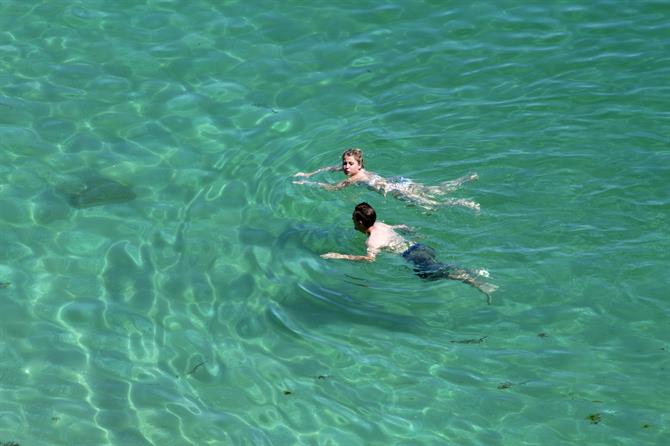
On the same path leading to the north of the island of Monteagudo, there are two sandbank sections: the beaches of Cantareira, the only place that has pebbles instead of fine sand, and Margaridas beach. Just up from the restaurant on the pier is a trail that leads to two small coves, Muxieiro and Areíña, which can be quite busy in the summer season.
On the island of Faro, there are two beaches beyond Rodas beach: the first is Bolos beach and the second is the beach of Nosa Señora and both are just as picturesque. On the island of San Martino, the beach goes by the same name. As this island can only be reached by private boat, it is called the virgin beach and epitomises the paradise of this archipelago.
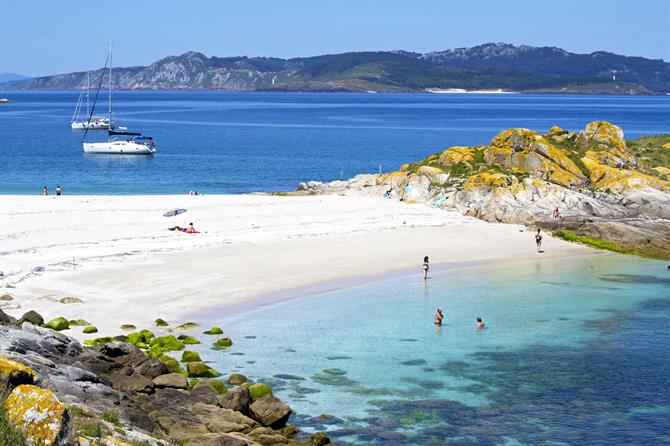
Hiking on the Cíes Islands
The Cíes Islands are small, but there are many trails to enjoy trekking around them. Moreover, one day is not even close enough to experience the rich landscapes of the area. The islands have two distinct faces: the Caribbean-like beaches are not found on the side that is exposed to the Atlantic, but rather an ecosystem of untamed lush green nature and rugged cliffs.
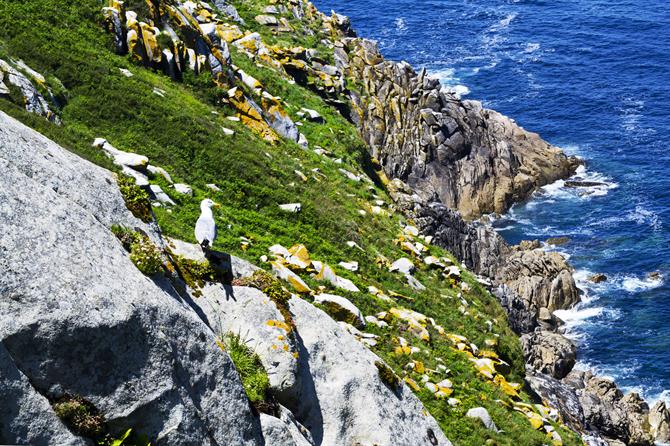
There are four major natural routes that are well marked: the Monte Faro route, Faro da Porta route, Faro do Peito route and the Alto do Príncipe route.
The Monte Faro route is the longest trail and starts from the information booth, passes behind Rodas beach, then crosses to the island of Faro through a dam on a spectacular lagoon, Lagoa dos Nenos, which is full of fish and seaweed.
After leaving the campsite and reaching another intersection, a climb starts on the right-hand side leading to the islands main lighthouse. During the ascent, enjoy breathtaking panoramic views of the island of San Martiño.
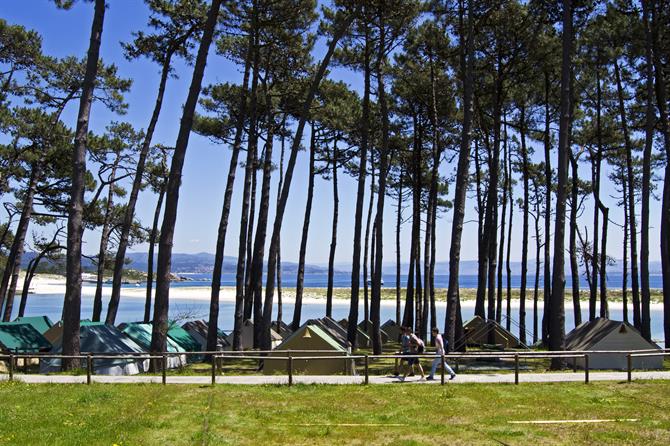
Halfway up the climb, there is a right turn where you will reach the Pedra da Campá, a curious rock pierced by the salty ocean winds, and a bird observatory. In addition to the abundant presence of seagulls, the Cíes islands have a significant colony of Cormorant birds.
After nearly an hour of meandering ascent, you will reach the spectacular panoramic view from Mount Faro. Don't forget your sunglasses, suncream and sunhats - as the further up you go, the trees and shade become sparse.
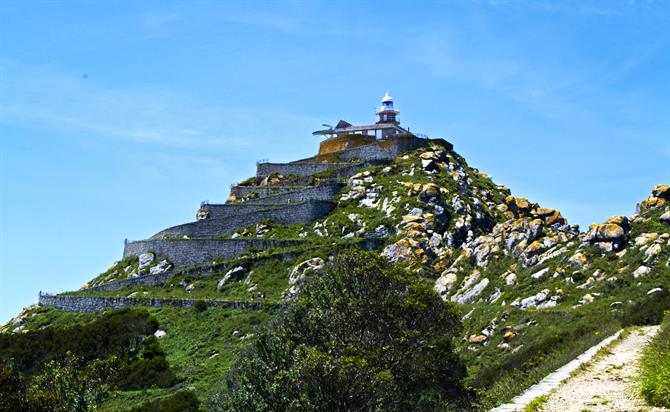
Where to eat on the Cíes Islands
There are three restaurants on the Cíes Islands: Serafín bar-restaurant, Rodas restaurant and Tapería Illes Cíes restaurant. Enjoy typical Galician cuisine such as octopus, seafood, meats and cheeses. The camping site also has a supermarket. If you bring your own food, you must take your rubbish back with you as there are no bins, to keep the islands as beautiful as you found them.
